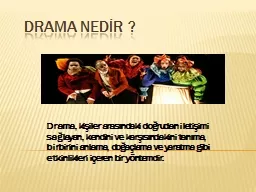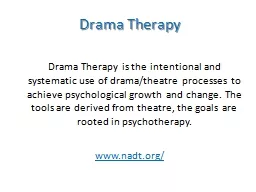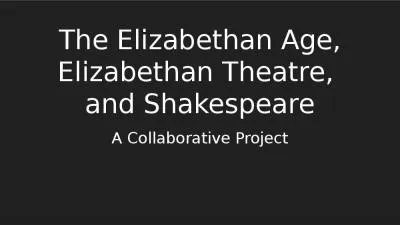PPT-Elizabethan Drama
Author : myesha-ticknor | Published Date : 2017-12-07
Macbeth William Shakespeare Sources Mrs Golden and Prestwick House Shakespeare and His Times When William Shakespeare 15641616 was born in StratfordonAvon England
Presentation Embed Code
Download Presentation
Download Presentation The PPT/PDF document "Elizabethan Drama" is the property of its rightful owner. Permission is granted to download and print the materials on this website for personal, non-commercial use only, and to display it on your personal computer provided you do not modify the materials and that you retain all copyright notices contained in the materials. By downloading content from our website, you accept the terms of this agreement.
Elizabethan Drama: Transcript
Macbeth William Shakespeare Sources Mrs Golden and Prestwick House Shakespeare and His Times When William Shakespeare 15641616 was born in StratfordonAvon England Queen Elizabeth I was the ruling . As the coursework is assessed purely by videoDVD there must be arrangements for a professional standard recording of selected work to take place These arrangements must be available during the course not just at the end The recording will have to be Theatres did not have. Scenery. Curtains. Special lighting. Women actors. Theatres were built around . roofless. octagonal courtyards. The 1. st. theatre was built in 1576 and called . The Theatre. The Great Chain of Being. All creation linked together . in hierarchical order. Important to keep one’s place, or one could upset . all creation. The chain was linked from the lowest creature on earth up to God. 1. gladly. 2. to drink socially. 3. relative or cousin. 4. anger; rage . 5. preposition that means “if”.. 6. term used to address a servant. 7. a noun which means “faith”. 8. candies; cakes. 9. phrase which means “may God keep you happy”. Ancient Greek Drama. Drama festivals began in Athens Greece about 5. th. century B.C.. Athens. City-state. Democracy. Educated citizens. Slave labour = leisure society. Ancient Greek Drama. 4 festivals honouring Dionysus--god of wine and vines. Structure of the Elizabethan theatre. . one of the most common . form of mass . entertainment . people of all classes went. to the theatre. beautiful costumes and. Early American Drama. The American . Company, managed . by David . Douglass. ,. . was the first professional company to produce plays in the American colonies. .. The first . production was . The Prince of Parthia. drama. comes from the Greek verb . dran. , which means “to do.” The Doing/Acting is what makes drama.. The earliest known plays. . . . Were written around the fifth century B.C. Produced for festivals to honor Dionysus, the god of wine and fertility. By: Brendan, Kilee, and Sephora. The social classes of the elizabethan era. Monarch. -usually the queen or king, the person who ruled the country, and had to be born into the rank. Nobility. -families containing dukes, earls or barons, they had to be either born into the family or appointed by the monarch. Education. and Leisure. The Problem of the Poor. Exploration and Voyages of Discovery. Raleigh and Virginia. Elizabethan Education. Attitudes to Education:. During Elizabeth’s reign, education slowly became more important.. “DRAMA” Types of Drama Tragedy: [solemn, personal, religious & Social Issues] Tragic Flaw & Catharsis Types of Drama Tragedy:[solemn, personal, religious & Social Issues] - Tragic Flaw & Catharsis DRAMA NEDİR ? Drama, kişiler arasındaki doğrudan iletişimi sağlayan, kendini ve karşısındakini tanıma, birbirini anlama, doğaçlama ve yaratma gibi etkinlikleri içeren bir yöntemdir . Drama tiyatro tekniklerinden yararlanılır ancak drama tiyatro demek değildir. Drama bir grup etkinliğidir. Seyirci ve oyuncu ayrımı yoktur. Bütün grubun katılımı ile anında oluşturmadır. Belli bir metni yoktur ve önceden prova yapmayı gerektirmez. Dekor kostüm ve aksesuar zorunluluğu yoktur. Grup dinamiğine dayalı oyunlaştırmadır. Anında oluşturmayı, yaratmayı içerdiği için yaratıcı drama olarak ta kaynaklarda yer almaktadır. www.nadt.org/. Pam . Dunne, . PhD, . RDT-BCT. Drama Therapy. Drama Therapy Populations. at-risk youth. prisoners. homeless mentally ill. victims of sexual abuse and family violence. children with psychiatric disorders. and Shakespeare. A Collaborative Project. Directions. Research your assigned topic . Use Sweet Search or a Research Tool from . https://www.bloomhslibrary.com/research. Include 5-7 facts about your assigned topic.
Download Document
Here is the link to download the presentation.
"Elizabethan Drama"The content belongs to its owner. You may download and print it for personal use, without modification, and keep all copyright notices. By downloading, you agree to these terms.
Related Documents

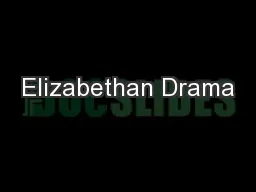
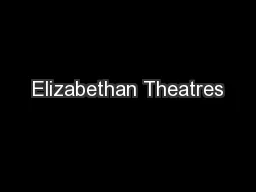
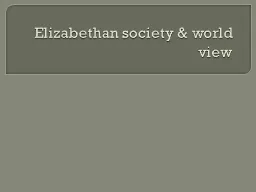
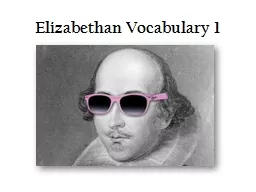
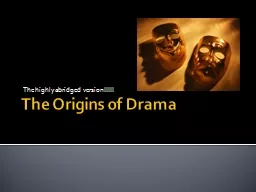
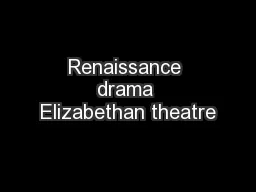

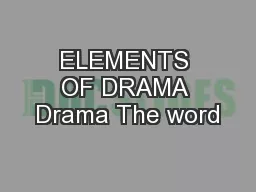

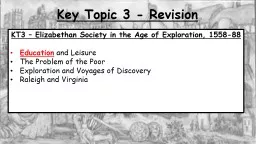
![“DRAMA” Types of Drama Tragedy: [solemn, personal, religious & Social Issues]](https://thumbs.docslides.com/762817/drama-types-of-drama-tragedy-solemn-personal-religious-amp-social-issues.jpg)
